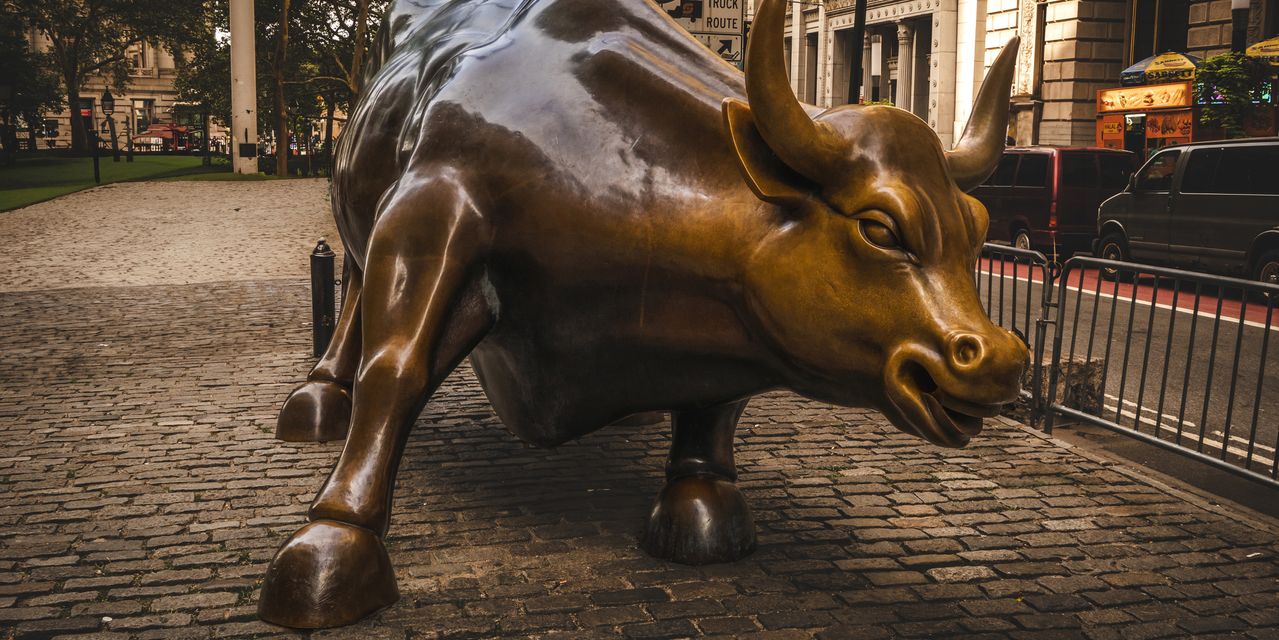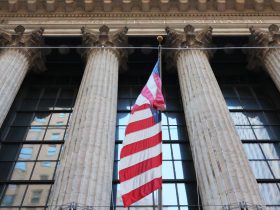Stock-market bulls looking for a year-end rally are feeling encouraged as a four-day rally accompanied by retreating bond yields helps take the sting out of three-month retreat that sent the S&P 500 and Nasdaq Composite into market corrections.
“Halloween is over…it is conceivable here that the Santa Claus rally has already started simply because pessimism was so thick in September and October,” markets economist Ed Yardeni, president of Yardeni Research Inc., told MarketWatch Thursday.
The Dow Jones Industrial Average
DJIA
was up around 475 points, or 1.4%, in afternoon trade, while the S&P 500
SPX
surged 1.7% and the Nasdaq Composite
COMP
jumped 1.6%. The Dow and S&P 500 were on track for their strongest weekly gains of 2023, according to Dow Jones Market Data.
Meanwhile, Treasury yields retreated sharply, with the 10-year rate
BX:TMUBMUSD10Y
dropping more than 7 basis points to 4.69% and marking a 10-day drop of more than 33 basis points, the biggest such 10-day move since March, according to DJMD. It was a surge in yields, which move opposite to debt prices, that got most of the blame for the stock-market pullback that began in late July.
The stock-market rally and yield retreat were both accelerated after the Federal Reserve on Wednesday left rates on hold for a second straight meeting. Moreover, Fed Chair Jerome Powell, while leaving the door open to further tightening, didn’t signal that another rate increase was assured, prompting investors to bet rates have peaked.
While earnings season has been tempered by cuts to fourth-quarter estimates, “the soft landing narrative is fully in charge, the seasonal rally is arriving right on queue, and the market is once again demonstrating its ability to shrug off what appears to be daunting geopolitical risks,” Louis Navellier, founder of Navellier & Associates, in a note.
That said, “the relief rally in the Treasury market might be a bit overdone, likely from short covering, but rates are still substantially higher than they were just a handful of months ago,” he said.
Skeptics contend both stocks and bonds were due for a bounce after a deep selloff but may struggle to extend gains.
“All told, much of the macro concerns that had held back the markets are still prevalent. Therefore, I wouldn’t be surprised if the markets turned volatile again. It may be far too early for investors to become optimistic,” said Fawad Razaqzada, market analyst at City Index and Forex.com, in a note.
“The Fed’s rate cuts could be several quarters away. Monetary policy is also going to remain tight for a long period of time in other important economic regions like the Eurozone and the U.K.,” he wrote.
Yardeni acknowledged risks remain, particularly on the geopolitical front.
While oil prices have retreated after a surge following the Hamas attack on southern Israel last month as fears of a wider conflict have faded, the potential for a broader conflict directly involving Iran or the U.S. remains a danger.
Meanwhile, data shows the economy is performing “splendidly,” Yardeni said, while it’s appearing more likely inflation can continue to subside without the Fed further slamming on the brakes.
Year-end rallies are a seasonal phenomenon, the economist noted.
November through April are the best performing six months of the calendar for equities. The term “Santa rally” is often used to refer to the market’s tendency to rise over the final 5 trading days of a calendar year and the first two trading days of the following year, though it can also loosely refer to the tendency for equities to rise into year-end.
Yardeni has advocated being overweight tech and using the pullback to buy tech, energy and financials. “I think financials have the chance to perform best here when there is more clarity on bond yields,” he said.
Yardeni said he expects Treasury yields have peaked for now, but didn’t rule out a return to the 5% area for the 10-year rate, though he noted that before the financial crisis, 10-year yields in the 4.5% to 5% range were typical.
Read the full article here











Leave a Reply